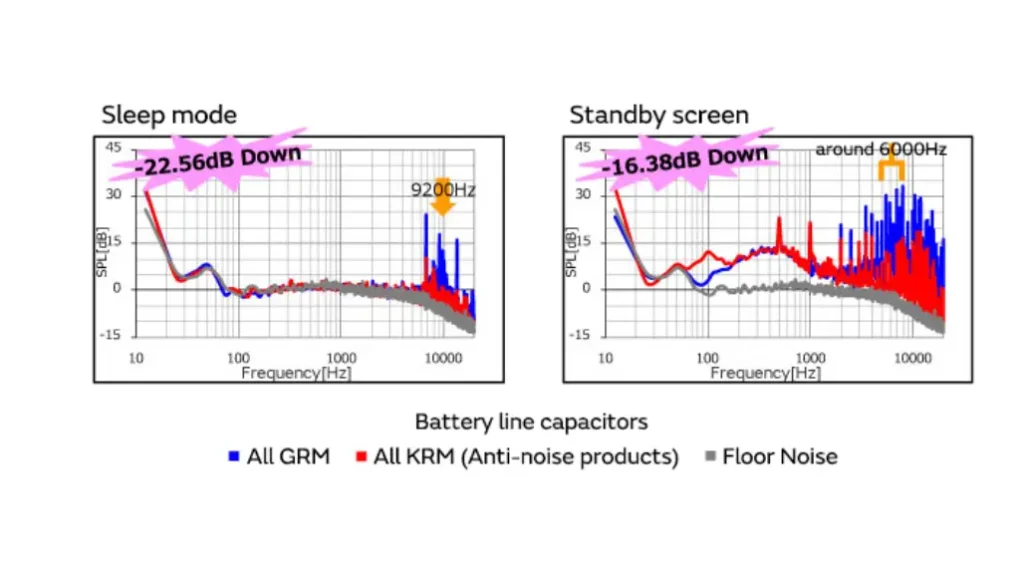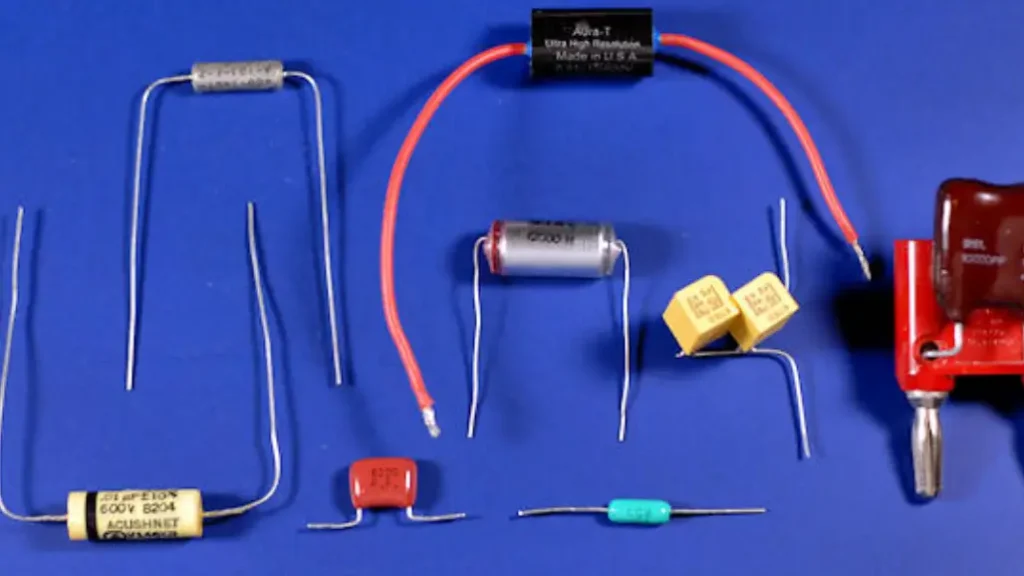Ceramic capacitors, ubiquitous in electronics, can sometimes generate unwanted noise. This noise can manifest as audible sounds, electrical interference, or even subtle performance degradation in sensitive circuits. Understanding the root causes of this noise is crucial for effective mitigation strategies.
This blog post will delve into the various factors that contribute to noise generation in ceramic capacitors. We will explore how these factors interact and how they can impact the overall performance of electronic systems. Furthermore, we will discuss practical techniques and design considerations for minimizing noise and ensuring optimal performance in your applications.
What Is Ceramic Capacitor Noise

Ceramic capacitor noise refers to unwanted electrical signals or disturbances generated by the capacitor itself. These disturbances can interfere with the proper functioning of electronic circuits.
Several factors contribute to ceramic capacitor noise, including the inherent properties of the dielectric material, manufacturing variations, and environmental conditions. This noise can manifest in various forms, such as voltage noise, current noise, and acoustic noise, depending on the specific mechanism and the operating conditions of the capacitor.
What Causes Ceramic Capacitor Noise
Ceramic capacitor noise can arise from several sources:
Dielectric Properties:
- Dielectric Absorption: This phenomenon occurs when the dielectric material within the capacitor slowly releases stored charge after the applied voltage is removed. This delayed release can introduce unwanted voltage fluctuations.
- Dielectric Relaxation: Some dielectric materials exhibit a time-dependent change in their polarization, which can lead to noise, especially at high frequencies.
Manufacturing Variations:
- Imperfections: Microscopic imperfections or inhomogeneities within the dielectric material can create localized variations in electrical properties, leading to noise.
- Electrode Effects: Variations in the electrode materials or their interfaces with the dielectric can also contribute to noise.
Environmental Factors:
- Temperature: Changes in temperature can affect the dielectric properties of the ceramic material, leading to variations in capacitance and noise.
- Voltage Stress: High voltages or rapid voltage changes can stress the dielectric, potentially increasing noise levels.
Piezoelectric Effect:
In some ceramic materials, particularly ferroelectric ceramics, the application of an electric field can cause physical deformation. This mechanical stress can generate acoustic noise, which can be coupled into the electrical circuit.
These factors can interact in complex ways, making it challenging to isolate the specific cause of noise in a particular ceramic capacitor.
How to Reduce Ceramic Capacitor Noise

Several strategies can be employed to reduce ceramic capacitor noise:
Component Selection:
- Choose low-noise dielectrics: Select ceramic capacitors with dielectric materials known for low noise levels, such as NP0 (NPO) or C0G. These materials exhibit minimal changes in capacitance with temperature, reducing noise sources related to dielectric variations.
- Consider X7R or X5R capacitors: While these materials have a wider temperature coefficient than NP0, they often exhibit lower noise levels compared to some other high-capacitance ceramic types.
Circuit Design Techniques:
- Use multiple smaller capacitors: Instead of a single large capacitor, use several smaller capacitors in parallel. This can distribute the stress on the dielectric and reduce the overall noise level.
- Implement filtering: Utilize filters, such as RC filters or LC filters, to attenuate noise signals at specific frequencies.
- Optimize PCB layout: Proper PCB layout, including careful routing and grounding techniques, can minimize noise coupling and improve signal integrity.
Environmental Considerations:
- Maintain stable operating temperatures: Minimize temperature fluctuations to reduce noise caused by temperature-dependent variations in dielectric properties.
- Avoid excessive voltage stresses: Keep operating voltages within the specified limits to prevent dielectric breakdown and associated noise.
By carefully considering these strategies and selecting appropriate components, engineers can effectively mitigate ceramic capacitor noise and improve the performance and reliability of their electronic systems.
Are Ceramic Capacitors Noisy
Yes, ceramic capacitors can generate noise, though the type and level of noise vary depending on several factors.
One common type of noise associated with ceramic capacitors is acoustic noise. This occurs due to the piezoelectric effect, where the application of an electric field causes the ceramic material to expand and contract slightly. These tiny vibrations, while often imperceptible, can generate audible sound, particularly in high-power or high-frequency applications.
In addition to acoustic noise, ceramic capacitors can also exhibit electrical noise. This can include voltage noise, current noise, and other forms of electrical fluctuations that can interfere with the proper functioning of electronic circuits. These electrical noise sources are typically related to the properties of the dielectric material, manufacturing variations, and operating conditions.
The level of noise generated by a ceramic capacitor depends on various factors, including the type of ceramic material used, the capacitor’s physical dimensions, the operating frequency, and the applied voltage. While noise is generally a concern in high-performance applications, careful component selection and circuit design techniques can minimize its impact.
Is It Normal for a Capacitor to Make Noise?
Yes, it’s possible for a capacitor to make noise, although it’s not always normal.
In some cases, slight noises, such as a faint buzzing or humming, can be attributed to the piezoelectric effect in certain types of ceramic capacitors. This effect causes the capacitor to vibrate slightly when subjected to an electric field, which can produce a subtle audible sound. This is generally considered normal and not a cause for concern.
However, if a capacitor is making significant noise, such as loud buzzing, clicking, or rattling, it could indicate a problem. This might suggest internal damage, such as a short circuit, a cracked dielectric, or internal component failure. In these cases, the noise may be accompanied by other symptoms like overheating, bulging, or leaking fluid.
If you notice unusual noise coming from a capacitor, it’s best to investigate further and consider replacing it, especially if it’s part of critical equipment.
Are Ceramic Capacitors Good for Audio

Ceramic Capacitor for Audio
Ceramic capacitors can be used in audio circuits, but their suitability depends on the specific application and the desired audio quality. They offer advantages like small size, high capacitance values, and low ESR (Equivalent Series Resistance), which are beneficial for decoupling power supplies and filtering high-frequency noise.
However, some limitations exist. Certain types of ceramic capacitors can exhibit microphonics, meaning they generate electrical noise in response to mechanical vibrations, which can be audible in sensitive audio systems.
Additionally, the capacitance of some ceramic types can vary significantly with temperature, potentially introducing distortion or instability in audio circuits. For critical audio applications, it’s crucial to select ceramic capacitors with stable temperature characteristics and minimize the potential for microphonic effects.
Ceramic capacitors can be used in audio applications, but their suitability depends on the specific type and the criticality of audio quality.
Advantages:
- Small size and high capacitance: Ceramic capacitors offer high capacitance values in small packages, making them ideal for decoupling power supplies and filtering high-frequency noise.
- Low ESR (Equivalent Series Resistance): This characteristic is crucial for maintaining signal integrity and minimizing distortion in audio circuits.
Limitations:
- Microphonics: Some ceramic capacitors can exhibit microphonics, meaning they generate electrical noise in response to mechanical vibrations. This can be audible in sensitive audio systems.
- Temperature sensitivity: The capacitance of some ceramic types can vary significantly with temperature, which can introduce distortion or instability in audio circuits.
Best Practices:
- Choose appropriate types: Use ceramic capacitors with stable temperature characteristics, such as NP0 or C0G types, for critical audio applications.
- Minimize vibrations: Ensure that the capacitors are securely mounted to minimize the impact of microphonics.
- Consider alternative options: For critical audio paths, especially in high-end audio equipment, film capacitors or other specialized types may offer superior performance.
Ceramic capacitors can be suitable for many audio applications, but careful selection and consideration of their limitations are essential to achieve optimal audio quality.
What is the Acoustic Noise of MLCC?
Acoustic noise in MLCCs (Multilayer Ceramic Capacitors) arises from the piezoelectric effect. When an alternating electric field is applied across the capacitor, the ceramic dielectric material within the MLCC experiences slight deformations. These rapid expansions and contractions, happening at frequencies within the audible range, cause the capacitor and the surrounding PCB to vibrate, generating an audible sound.
This phenomenon is often described as “singing” or “buzzing” and is more noticeable in high-power or high-frequency applications where the voltage across the capacitor changes rapidly. The intensity of the acoustic noise depends on various factors, including the amplitude and frequency of the applied voltage, the size and thickness of the MLCC, the type of ceramic material used, and the overall design of the circuit board.
While acoustic noise from MLCCs is generally not a safety hazard, it can be an annoyance in consumer electronics and may require mitigation measures. This can involve selecting MLCCs with lower piezoelectric properties, optimizing circuit layout to minimize vibrations, and implementing noise reduction techniques.
Conclusion
In conclusion, understanding the sources of noise in ceramic capacitors is crucial for optimizing circuit performance and ensuring system stability. By carefully selecting the appropriate capacitor type, considering operating conditions, and implementing noise reduction techniques, engineers can minimize the impact of noise and achieve the desired signal integrity.
Weishi Electronics specializes in providing high-quality ceramic capacitors with exceptional noise performance. Our extensive product line offers a wide range of options to meet the diverse needs of various applications.
To explore our selection of high-quality ceramic capacitors and discuss your specific requirements, please contact us today for a quote. We are committed to providing exceptional customer service and helping you find the ideal solution for your noise-sensitive applications.